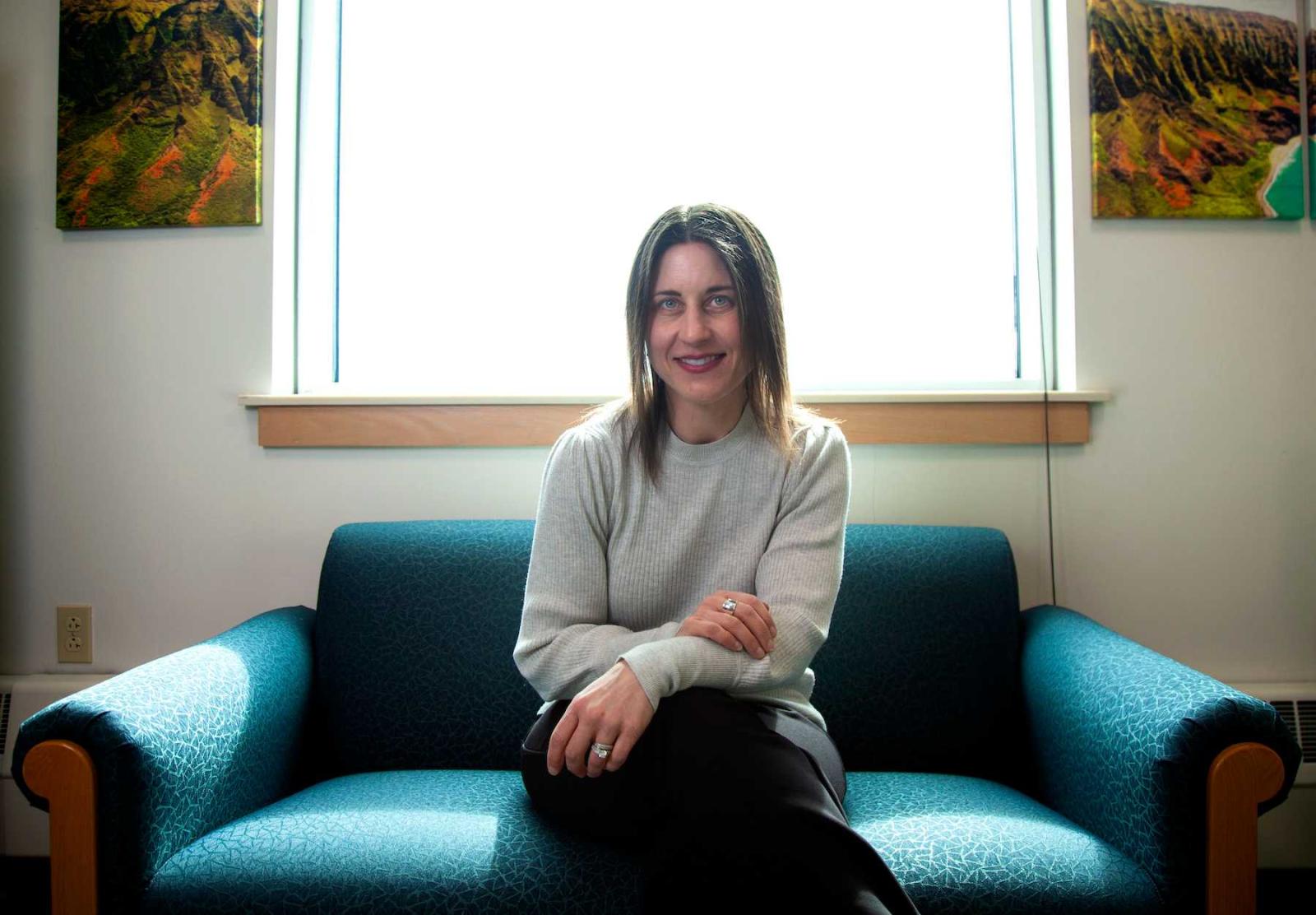Three years after receiving a major national grant for research on youth mental health, Lori Hilt '97 is ready to share results that show the daily use of a mindfulness app can have a positive effect on adolescents struggling with persistent negative thoughts.
“At the end of the intervention period, we found that in fact those who used the mindfulness version of the app had reduced rumination,” said Hilt, associate professor of psychology at Lawrence University. “They also had reduced depressive symptoms and reduced anxiety symptoms.”
She’ll be detailing the results of the study for the first time when she participates on a panel on targeted cognitive interventions that will be part of the March 17-20 Anxiety and Depression Association of America (ADAA) conference in Denver.
The study followed more than 150 children ages 12 to 15, with some using mindfulness exercises on an app as they deal with persistent negative thoughts. A separate group used the app for daily mood monitoring but did not take part in the mindfulness exercises. The intervention period lasted three weeks, during which Hilt and her team of Lawrence students asked participants to use the app three times per day. They then had follow-up sessions with them periodically for six months; app use was optional during the follow-up period.
Read more on Hilt’s 2019 NIH grant
Hilt among four Lawrence faculty to receive 2021 national grants
Hilt said the benefits of using the mindfulness exercises consistently for three weeks were clear and lasted through six weeks after the intervention. Those benefits did not continue for the full six months, but she believes the continued use of such practices has the potential for longer lasting results, providing one more tool for families navigating the complex terrain of youth mental health.
Adolescent rumination refers to a mindset in which someone can’t get beyond the negative things that are happening around them. It’s often a precursor to depression or anxiety or other mental health battles that can track into adulthood.
More than 20 Lawrence students assisted Hilt with the study over the past three years in the Child and Adolescent Research in Emotion (CARE) Lab. Eight of those students stayed with the project for multiple years.
“We were able to do a lot of professional development with them,” Hilt said.
Hilt and her students created their own mobile app, known as CARE, for the project. Early work began five years ago with an $18,000 grant from the American Psychological Foundation and had a target group of 80 Fox Valley adolescents and their families. The project would expand considerably in 2019 when Hilt received a three-year $368,196 grant from the National Institute of Mental Health, part of the National Institutes of Health.
The study comes as the number of mindfulness apps on the market continues to grow. Mindfulness—the practice of focusing on the present moment without judgment via breathing methods and other exercises—is not new. It’s been practiced in some cultures for hundreds of years. But the idea of accessing mindfulness techniques on your smart phone as an avenue for reducing stress is fairly new, and growing in popularity. There has been little scientific study, however, of the effectiveness of those apps, particularly related to adolescents, Hilt said. Her study is helping to pave that path.
“I was really encouraged and excited by the results,” she said. “I see it as a sort of proof of concept.”
The results show that, yes, doing mindfulness exercises and paying attention to your emotions and doing it non-judgmentally is a mechanism that can reduce rumination in adolescents.
“And it can be done in this format, which is really easy,” Hilt said. “Almost 95% of teens have a smart phone already. So, it’s easily disseminable; we don’t think it’s harming anyone, and it seems to be helping. I think this will help advocate that this is something that we should be looking into as a preventive tool.”
Hilt said many mental health professionals are already leaning into mindfulness techniques and the idea of people accessing them where they’re at—on their phones. This study adds some juice to that practice, not as a replacement for therapy or other health care avenues but as one more tool that can be utilized on a daily basis. For families with kids in that 12- to 15-year-old window, it’s a chance to be pro-active.
“We weren’t recruiting depressed or anxious kids,” Hilt said. “We were recruiting ruminative kids who are likely to later develop that. We thought this could be a good tool for those kids to use.”
Important work in the CARE lab
The children in the study used the CARE app for a few minutes three times a day for three weeks. Using the app after the initial three weeks was optional, but Hilt and her students continued to chronicle how they were feeling through six months.
Nina Austria, a Lawrence sophomore mathematics major from Monmouth Junction, New Jersey, worked with Hilt on the mindfulness project as a summer research assistant, leading data analysis and assisting in other areas. It was work that felt satisfying, she said—not only to gain important research experience but also because of the potential benefits in treating youth mental health.
“I was excited to get involved with this project because I think that a mindfulness app acknowledges that technology has become a huge part of adolescents’ lives while also offering the possibility of technology as a tool to impact mental health positively rather than negatively,” Austria said.
The research also ties directly to Austria’s career goals. She is eyeing work in data science, so building programming language and scripts and running mediation analyses as part of the project gave her significant experience outside of the classroom.
“I really appreciated that I was able to gain experience with analyzing data while simultaneously being able to look into ways of addressing adolescent rumination,” she said.
The results of the study are promising enough that Hilt is now envisioning mindfulness apps being utilized more widely in treatment of pre-teens and teens. It could be a particularly helpful tool, she said, in rural communities where resources might be limited.
At the ADAA conference, Hilt will be on a panel that will feature several other studies tied to targeted cognitive interventions, but not necessarily exclusive to children.
“I see the conference as a first step in disseminating the findings,” she said. “There will be a lot of researchers and clinicians there who are interested in anxiety and depression, which I think our study can speak to.”
Hilt, meanwhile, is involved in a related study based at Harvard University’s McLean Hospital. That project is using the mindfulness app Headspace in a five-year study that incorporates brain scans of the participants. Hilt will serve as an expert on adolescent rumination as part of that study, funded by a $51,000 subaward through Harvard from the National Institutes of Health.
It’s part of ongoing work to better understand and treat youth mental health.
“You start seeing rates of depression going up in adolescence, starting right around age 15,” Hilt said. “It goes up for boys, but it rises even more sharply for girls and non-binary teens. We really want to hit that period before that to see if we can reach those kids who might be at risk. Let’s bring their symptoms down and give them a tool to avoid ruminating, give them something else to do with their negative emotions.”
Note: Research tied to the three-year grant is supported by the National Institute of Mental Health of the National Institutes of Health (R15MH116303). The Harvard grant is through the NIH’s National Center for Complementary & Integrative Health (#R01AT011002). The content reported here is solely the responsibility of the author and does not necessarily represent the official views of the NIH.




